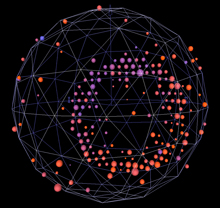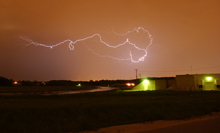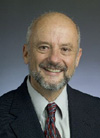 | Tuesday, May 23, 2006 |
|
Tuesday, May 23
Wednesday, May 24 Click here for links to descriptions of each event. |
|
Extended Forecast |
Secon Level 3 |
|
Tuesday, May 23 -Tomato Bisque -Lemon Pepper Club -Burgundy Beef Tips -Baked Fish Creole over Rice -Grilled Chicken Caesar Wrap -Supreme Pizza -Rio Grande Taco Salads |
|
Wednesday, May 24
Thursday, May 25
Chez Leon Menu |
| Fermilab Today is online at: http://www.fnal.gov/today/ Send comments and suggestions to today@fnal.gov Fermilab Today archive Fermilab Today PDF Version Fermilab Result of the Week archive Fermilab Safety Tip of the Week archive Linear Collider News archive Fermilab Today classifieds SuBscribe/UnsuBscribe to |
|
|
Herald Tribune, May 18, 2006: Commitment to science The Tevatron collider at the Fermi National Accelerator Laboratory in Batavia, Illinois, looks from the sky like an enormous, moated ring. In the collider, subatomic particles are accelerated to extremely high speeds and crashed into each other within a detector chamber. The purpose is to capture a computerized image of the debris of each antiproton-proton collision. The particles that emerge - varieties of quarks and mesons, for instance - seem at first to have nothing to do with nature as we know it. Except, of course, that they have everything to do with how the universe was formed. Read More |
| Nature of Science | ||
Yesterday the Laboratory held its yearly Symposium on the Nature of Science,
The event was sponsored by the Laboratory and the Friends of Science Education. It has an interesting history. It began as an event supported by the Illinois State Board of Education for teachers in the year 2000, the year in which Kansas outlawed the teaching of evolution in their public schools. It seemed then and is still true today that it is important for our society to understand the fundamental nature of science and the principles that apply throughout whether we do particle physics, mathematics, biology or any other discipline. Today the Symposium gathers together not only teachers but also a far larger number of high school students. This year's Symposium had a number of outstanding speakers on a broad range of disciplines. Fermilab's Chris Quigg addressed the Nature of Science, followed by University of Chicago Professor Sydney Nagel on the Physics of the Breakfast Table, Northwestern Professor Hilary Goodwin on Lead Poisoning: Advances and Challenges and Professor Stephen Pruett-Jones on Animal Mating Systems: What We See and What We Don't. The audience was also outstanding. Vibrant and vocal, their enthusiasm was contagious. One of the speakers told me after the meeting that he would love always to have such an interactive audience; this one was more stimulating, inquisitive and exciting than the scientific audiences he normally encountered. Seeing all these students engaged in the lectures and asking important questions gives us great hope for our common future. |
|
May 19-22 - Shutdown ends and startup begins - Linac and Booster have beam - NTF studies - Ground faults - Machine Reports Read the Current Accelerator Update Read the Early Bird Report View the Tevatron Luminosity Charts |
|
Batavia Road entrance closed to cars and bicycles The Batavia Road entrance is closed through Friday, May 26, while the City of Warrenville re-paves roadways and carries out other construction work along Batavia Road. Delays are expected to continue until early June, even after the entrance re-opens. Drivers and bicyclists should use Pine and Wilson Street entrances until the work is completed. Pine Street entrance hours are 6:00 a.m. to 8:00 p.m. for the general public and 24 hours a day, 7 days a week for employees. The Wilson Road entrance hours are 6:00 a.m. to 6:00 p.m., Monday through Friday. For more information, contact Tom Prosapio at prosapio@fnal.gov
2006 Users' Meeting at Fermilab, May 31- June 1
Professional Development
C++ Course offered June 5 |


